
How to Plan your Horse’s Training for the Entire Season
What if this year we started planning a little bit more? Like setting precise goals, such as 1 or 2 important shows. That would already be great, wouldn’t it? 😊 What if we went even further? Let’s plan 1 year of sessions in advance! Do I hear you say it’s impossible? There’s no such thing!
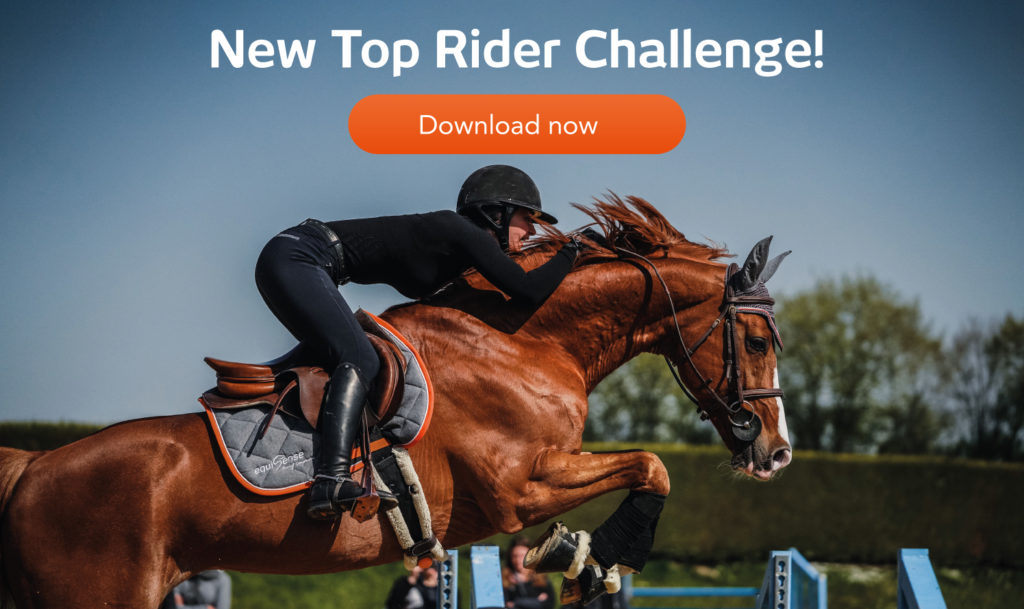
Table des matières
The prerequisite to planning your horse’s training: set precise goals 🎯
First and foremost, you have to understand that planning your horse’s training requires you to set goals. These goals could be big shows, like 3 day shows. It may seem obvious, but I’m sure only a few riders know from September on their entire show agenda. It is however impossible to plan ahead without it!
“Starting off a show season with no set goal is a random approach and therefore risky.” Patrick Galloux
Let’s get to the point.
Horse training plans 101
What I’m about to tell you isn’t actually specific to horse riding, but it goes for all sports. The point is to consider that your horse and yourself are full-fledged athletes. It’s what we’ve been saying to those “horse riding isn’t a sport” people, isn’t it? 😉
Hold on to your seat for a few minutes, that’s important. We’re going to go from the scale of a year to the scale of a week. “Official” terms are as follow:
- A season (= a year)
- A sequence (~a semester)
- A period (~a trimester)
- A cycle (= a month)
- A micro-cycle (= a week)
Let’s go over them one by one so you understand how useful they are.
The sequences
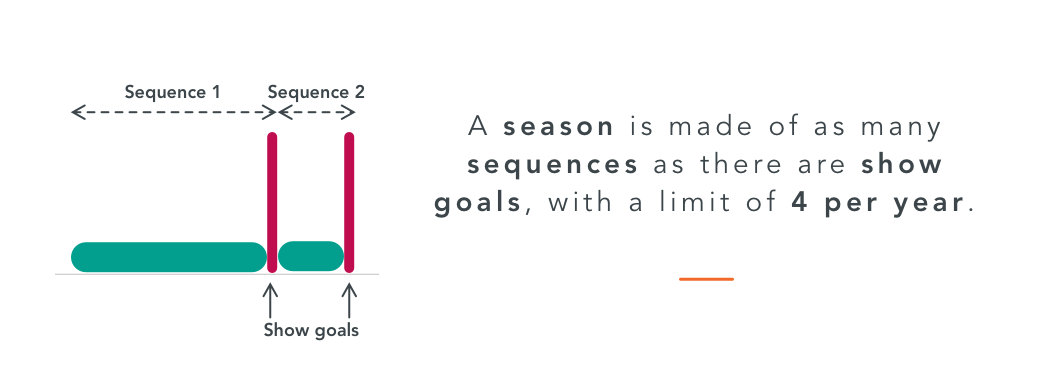
A season, so a year, is divided in sequences. There are as many sequences as there are set show goals. I’m not talking about little Sunday shows, but big events you have to be well prepared for (like 3 days shows). Let’s imagine that you have a big show in May and the National Championships in July. Your season will then be cut in 2 sequences. Let’s set the goal limit to 4 per season, so a maximum of 4 sequences in a year.
1 sequence = 4 periods
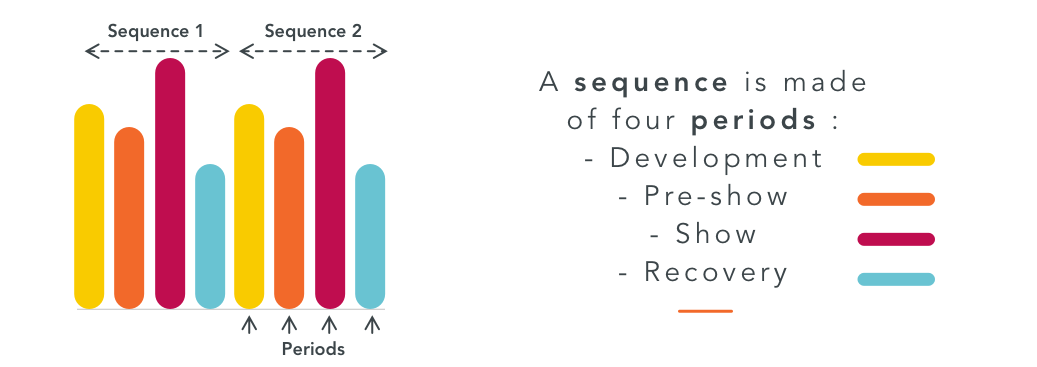
Every sequence will then be divided into 4 periods:
- The development (which represents at least 50% of the sequence)
During this period, the workload is important, the sessions are long but not intense. It’s around this time that we work on learning new things (like flying changes for instance), technique and muscle reinforcement.
The development period can be cut in half with a resting phase if it’s too long.
- The pre-show (which represents about ~30% of the sequence with a maximum of 2 cycles)
During this shorter period we’re rather looking for explosiveness and power. The sessions are shorter but more intense and technically difficult.
- The goal show (which represents about ~10% of the sequence)
This period is rather short and ends with one of the show goals you set. The sessions are short but technically difficult, like in a show!
- The Recovery (which represents about ~10% of the sequence)
It’s the period after the goal show. Time to let your horse rest a bit! Give your horses a few days of rest before starting harder work again next sequence.
Cycles and micro-cycles
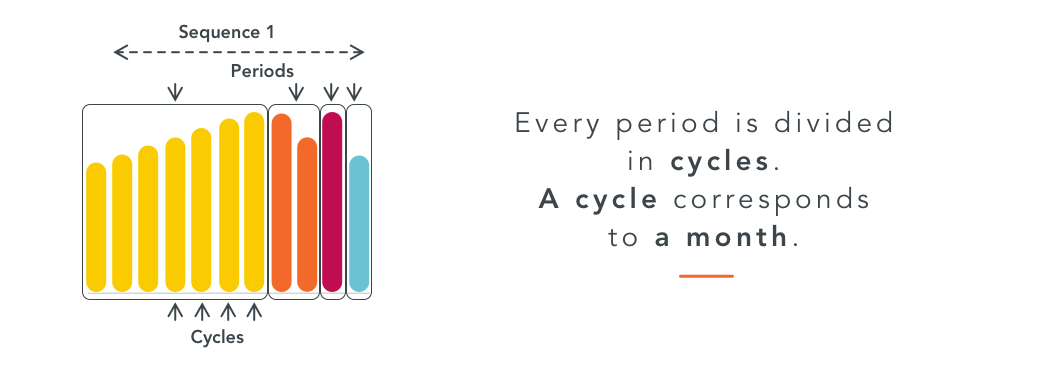
Then for each period we’re going to count several cycles. These cycles are actually months.
Lastly, the cycles are divided in micro-cycles. These micro-cycles are weeks. Here we’ll consider 1 cycle = 4 micro-cycles: 3 progression micro-cycles + 1 “rest” microcycle.
The workload during this “rest” microcycle corresponds to the level of the first week of the cycle.
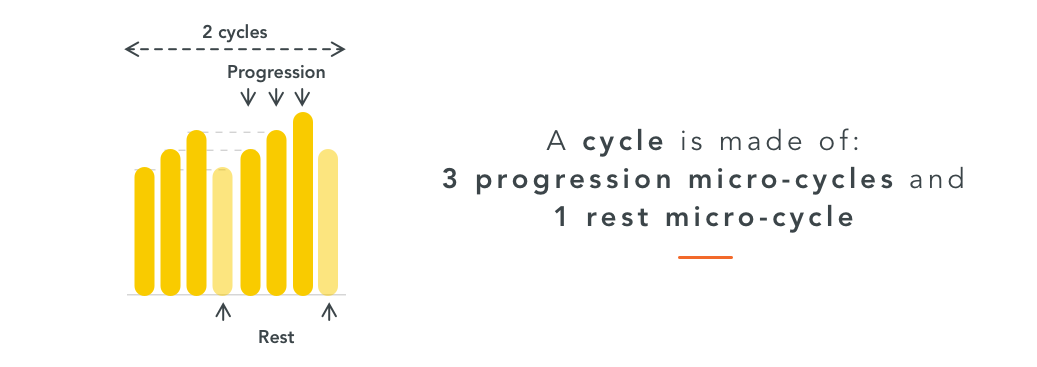
A quick summary…
To be well prepared for your season, you have to set goals. These goals (2 to 3 big shows during the year) will pave your season and divide it in as many sequences as there are shows.
Each sequence will be cut into 4 periods which differ in the intensity and length of the session.
During these periods, cycles of 4 weeks are installed as such: 3 weeks of progression, and a week of “rest”. And in the end, you get… this! ⬇️
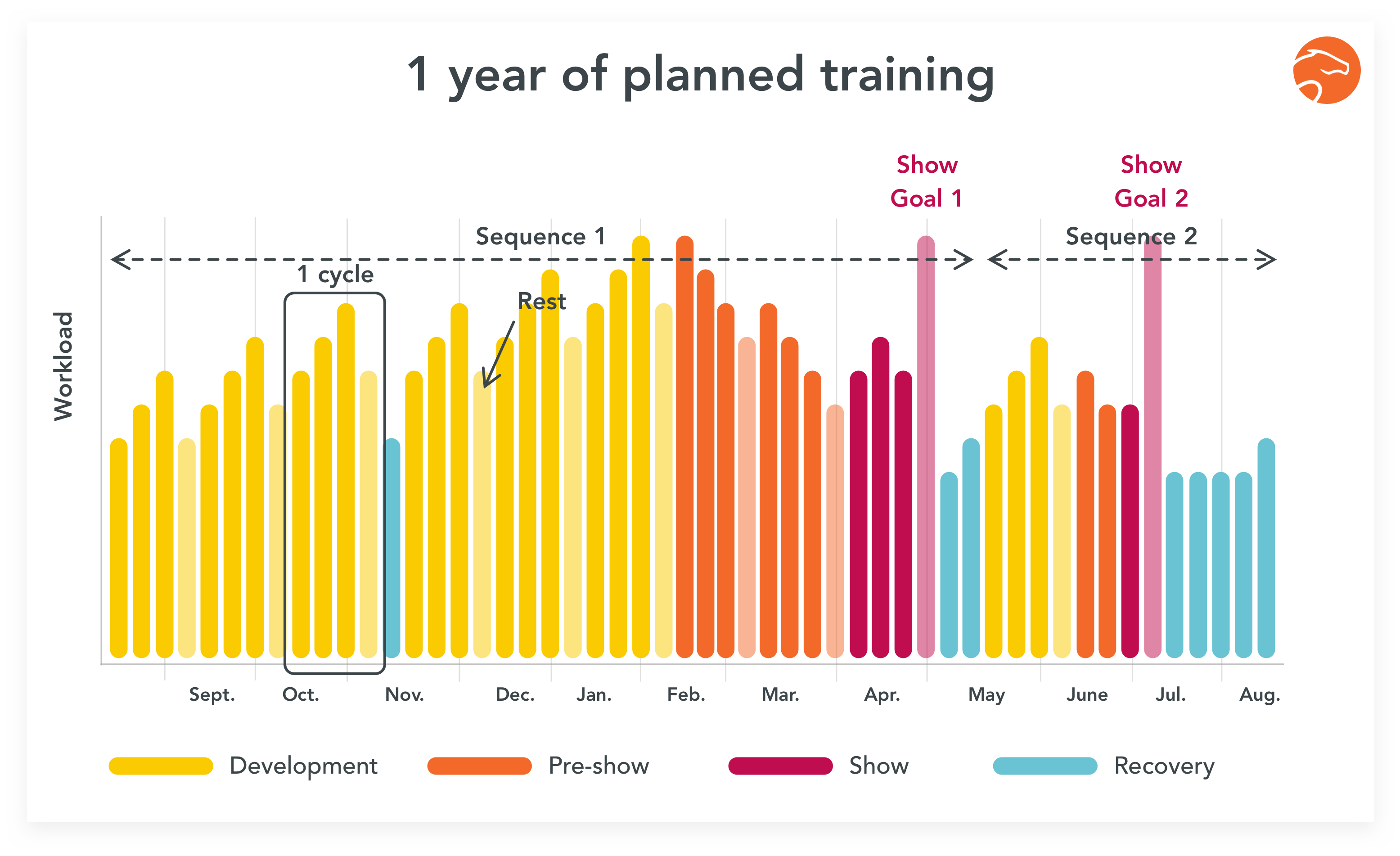
Let’s use an example
Let’s keep our 2 goals of the year (a big show in May and Nationals in July). Your season will look like this:
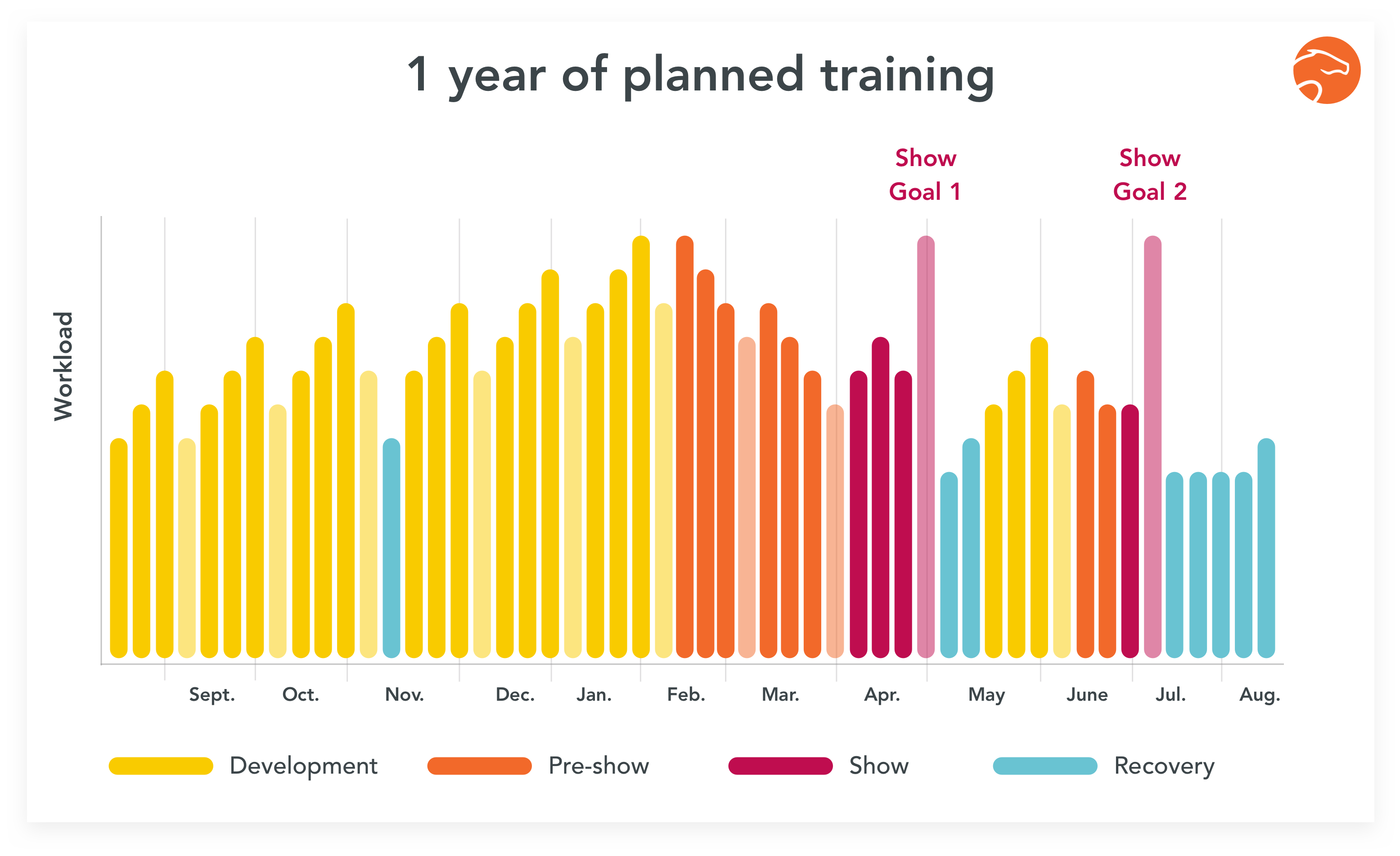
From late August to mid-February, you’ll be in the development period, cut in half because it’s quite long. The workload will increase gradually while following the cycles (3 weeks of progress, 1 week of rest”. During this period, you’ll work on your horse’s physique, learning new things and technique.
From mid-February on, you’ll enter the pre-show phase. The workload will decrease, but the intensity increases. Shorter sessions but denser! During this period, you’ll work more specifically on things related to your goal.
A month before the goal show, you’ll enter the show period. The sessions are short and look like what’s expected in a show.
Lastly, the 2 weeks following the show are dedicated to your horse’s recovery. The horse has to recover from the first sequence and rest to start over for the next sequence.
📚 Read more: Here’s how to handle stress during shows
Evaluate the workload to choose what you’ll be working on every week
You now know how you’ll be working for the next few months, but now you want to know what you’re going to work on daily! First, let’s talk about each session’s workload.
The workload, to put it short, is the amount of energy your horse uses in a session.
That’s pretty vague. And it depends on a lot of factors: the level you train at, your horse’s age, if it is a mare, a gelding, a stallion, how much it weighs… Let’s keep it simple and look at what can change your workload while doing flatwork, jumping and hacking.
Flatwork or dressage sessions
We’ll talk about 3 different type of flatwork sessions:
- Stretching, which is good for recovery. You’ll then work on suppleness, the contact with your horse’s mouth, with a low and round attitude. No technical difficulties.
- Technical work, which will allow you to teach new things to your horse. You’ll ask for more balance and control, for instance to work on collection. You’ll work on ground poles for example.
- Muscle building, which will make your horse work with a lot of energy on your horse’s muscles, with exercises such as raised ground poles, working and going backwards then forward without losing energy, etc.
The workload goes gradually: stretching < technique < muscles.
Read more: 4 dressage exercises to build your horse’s muscles
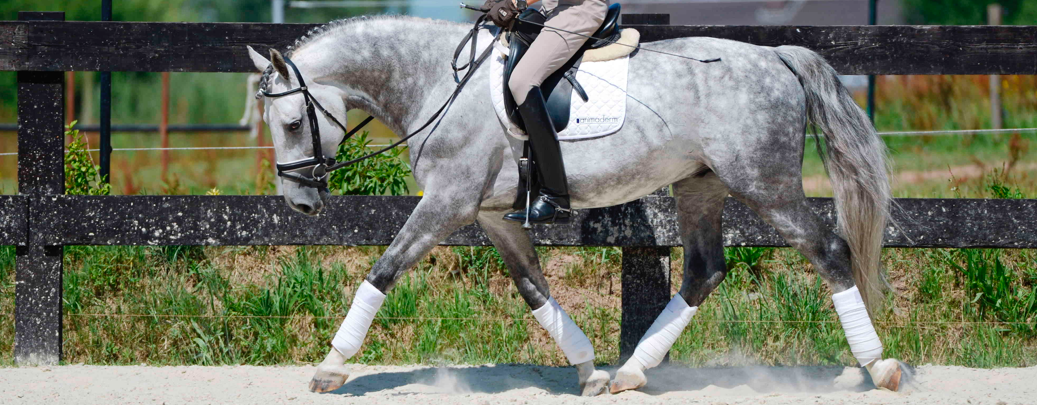
Jumping sessions
We’ll talk about 4 different type of session:
- Gymnastic work, which consists in exercises over small fences to get the horse used to jumping, improve its technique and control without going too hard. These are important sessions, but they aren’t too taxing.
- Mechanization, in which you can raise the height a bit. You can work on this with lines that make it easier to jump higher, or with exercises like a figure 8, curved lines…
- Combinations, like in a show.
- Muscle building, while jumping this time. Jumps at walk, bounce jumps, large fences with no momentum…
It’s gradual here as well: gym < mechanization < combinations < muscles.
Learn more: 4 gridwork exercises you have to try
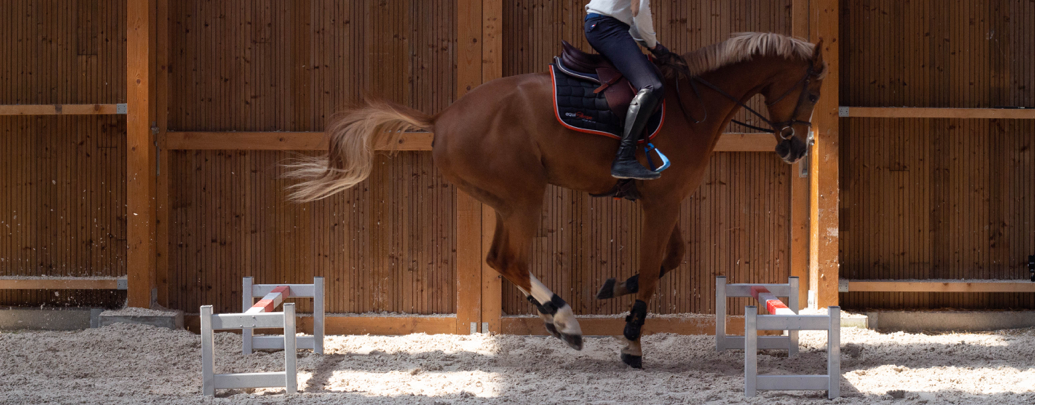
Trot and canter hacks
We’ll talk about different types of hacks:
- “Classic” trot hacks, 30 minutes on flat ground
- “Uneven terrain” trot hack, which contains a sloped ground
- Interval canter hacks (4 reps of 3 minutes at canter – 2 minutes at trot for instance). It gets harder if you trot less.
- The ‘continuous canter’ hacks
It’s obvious that for any of these sessions, the length and the speed will have an impact on the workload. The quality of the ground (a softer ground will be harder on the horse), the slope (an uneven terrain will be easier than only one big climb/descent) and of course the horse’s training will also have an impact.
Let’s put it this way: trot hack < uneven terrain trot hack < interval < canter.
Learn more: Here’s the only way to improve your horse’s fitness
Learn more: Active recovery: here’s how it works
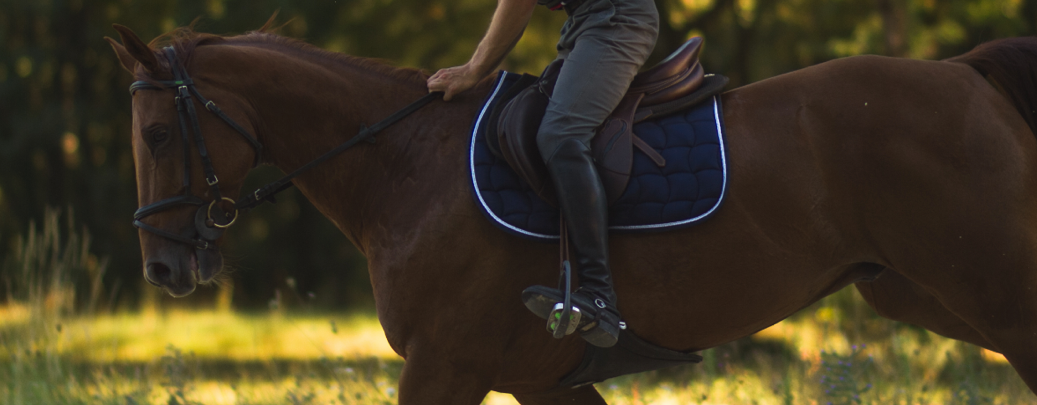
How to distribute these sessions during the week?
A great trick is to give each session a value, a number of points for each typical session according to the workload it represents.
The score given to each typical session are given here as an example and depend on what you do with them. You have to adjust them to your horse. But here is an example of the workload for a show jumping horse.
| Session | Pts | Description |
| Paddock | 1 | Doesn’t count for horses going every day |
| Ground work | 2 | |
| Walker | 2 | At walk |
| Hack | 2 | At walk |
| Lunging | 3 | |
| Lunging + | 4 | With training aids and/or ground poles |
| Stretching | 4 | We’re looking for suppleness, with a low and round attitude |
| Cavalettis | 4 | Work on small fences |
| Trot hack | 5 | 30-45 min, flat terrain |
| Canter (1) | 5 | 2000m at 350m/min = show canter for 6 minutes once |
| Dressage | 5 | We’re looking to work on execution (ground poles, collected work) |
| Mechanization jump | 5 | We’re looking to work on execution (lines, exercises like figures 8 with jumps…) |
| Canter (2) | 6 | 2000m at 450m/min = moderate cross country canter for 4min30 once |
| Trot hack on uneven terrain | 6 | 30-45 min, with a slope |
| Course | 6 | Like in a show |
| Canter (3) | 7 | 4000m at 450m/min = moderate cross country canter for 9min once |
| Muscle building | 7 | Jumps at walk, bounce jumps, banks, large jumps at trot, reinback, raised poles… |
| Show | 8 |
The sessions are distributed in the week and we add up the points. The weekly total has to fit the representation from earlier: the workload increases during the development period, decreases during the 3 other periods.
Here is an example of a schedule for 12 weeks, at the beginning of the development period:

Let’s plan this year together
You want to plan as well? Let’s see how to do it together.
Let’s start with the goals 🎯
Firstly, ask yourself: What is my goal this year? Nationals? Internationals? A 1m20 class? A goal is a goal, no matter what it is!
Set yourself a show and a ‘level’ as your main goal.
Then set one, two or three maximum medium goals. Write them down in a calendar as I said earlier.
Let’s distribute the periods, the cycles and micro-cycles. 🏆
Distribute then the periods (development, pre-show, show and recovery) with the right proportions (about 50%, 30%, 10%, 10%).
Establish a workload plan 📅
Go back to the scores per session and establish the workload score you’re starting with. Add the “typical week” points you had before, and you’ll get a score which will be your basis. In the schedule just above, the workload score is 28. This can be far less if your horse doesn’t work every day.
For instance: every week, my horse does 3 lunge sessions, 1 stretching session, 1 dressage session, 1 cavaletti session and 1 trot hack. This brings a total of 3*3+4+5+4+5=27 points.
Establish then the workload score week per week according to the level you set as a basis and observing the 3 progression weeks then one rest week.
And if you want to take it even further, you can set for each cycle a small technical or physical goal. Example: “During the 4th development cycle, I want my horse to be able to do its Canter 2 with an active recovery time of 5mn”. This will help you run every week with small goals outside of shows.
Fill the microcycles with all this 🖊️
Lastly, fill every day of the week according to the workload plan you set.
Here you go, your entire year!
If interested, I have hereby made a full training program for a show jumping horse with two goals through out the year. Click here to read more:
How can I track all of this? 📲
Indeed, in order to program your horse’s training for a whole season, it’s important to set goals but also to measure and follow everything you do.
The first thing you can do is write down every session. What was done, how intense, how many transitions, etc. The important thing is to collect as much information as you can in order to adjust the following sessions, and make sure everything is coherent.
Equisense Motion and Equisense Motion S will help you greatly. You can follow:
- The type of sessions,
- The length,
- The time spent at each gait,
- The number of jumps,
- The number of transitions,
- The ratio between both hands
- The heart rate (for Motion S)
- The speed
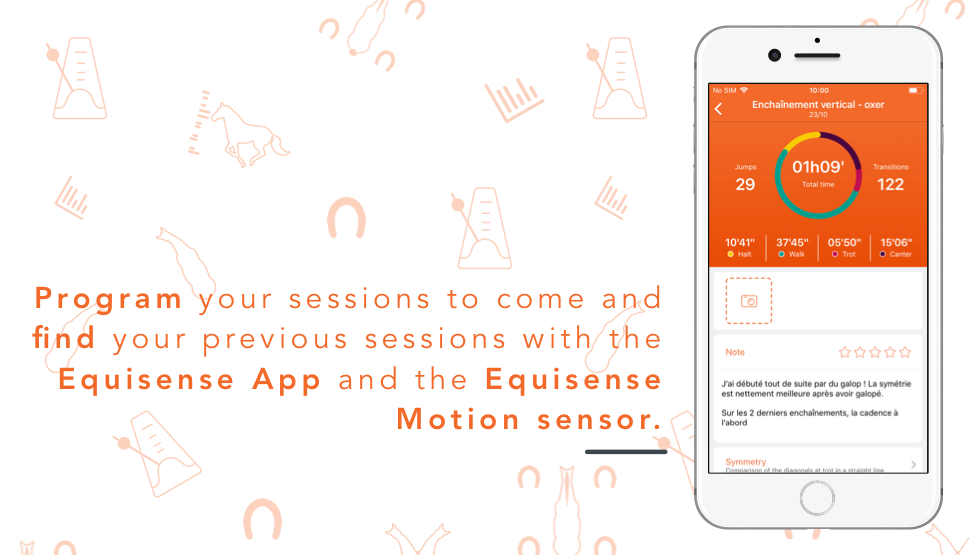
You can also analyse the progression on different factors:
- Elevation improvement
- Stability of cadence
- Improvement of the approach on combinations
- Improvement of the symmetry
- Lower the heart rate at a certain speed
- Etc.
Following and measuring your progress will help you adjust the workload if necessary.
Fun fact ☝️
Even without a sensor, you can now use the GPS tracker to mesure your speed and your cumulative elevation gain. In addition, the app can be used as a diary and allows you to manually enter every session you did. You can also enter every care session you did on your horse!
The Equisense mobile app has more than 300 exercises you can pick from to liven up your sessions 😊
Conclusion
Here’s the theoretical part of programming your training. It makes you realize what we should be doing and what we actually do! Don’t feel bad, the important thing is to start trying. 😉
And for those of you who don’t do shows, you can set goals as well and take inspiration from this plan to better prepare your sessions.🙂
Till the next article,
Camille Saute,
R&D Director at Equisense.
Cover picture: ©Jérémie Garnier
Bibliography
Galloux, P. (2017). Programmer son entraînement : exemple du concours complet d’équitation. Retrieved August 15, 2018, from Equipaedia website: http://www.haras-nationaux.fr/information/accueil-equipaedia/equitation/l-entrainement/programmer-son-entrainement-exemple-du-concours-complet.html
Bessat, G., Galloux, P., & Mull, P. (2017). Planifier l’entraînement du cheval – Organisation générale. Retrieved August 15, 2018, from Equipaedia website: http://www.haras-nationaux.fr/information/accueil-equipaedia/equitation/l-entrainement/planifier-l-entrainement-du-cheval.html
Galloux, P., Mull, P., & Bessat, G. (2017). Evaluation de la charge d’entraînement – Première approche. Retrieved August 15, 2018, from Equipaedia website: http://www.haras-nationaux.fr/information/accueil-equipaedia/equitation/l-entrainement/evaluer-la-charge-d-entrainement.html
Galloux, P. (2017). Construire les microcycles d’entraînement : exemple du concours complet. Retrieved August 15, 2018, from Equipaedia website: http://www.haras-nationaux.fr/information/accueil-equipaedia/equitation/l-entrainement/construire-les-microcycles-d-entrainement-exemple-du-concours-complet.html
Thank you Camille ! This is really helpful… by any chance would you have a similar detailed training plan for a driving horse ?
Hi, Thanks for your message! I don’t have a specific planned prepared for driving but I will keep it in mind for one of the following articles 🙂 It should look approximately the same with some different training aspects!
Thanks for sharing such a great content